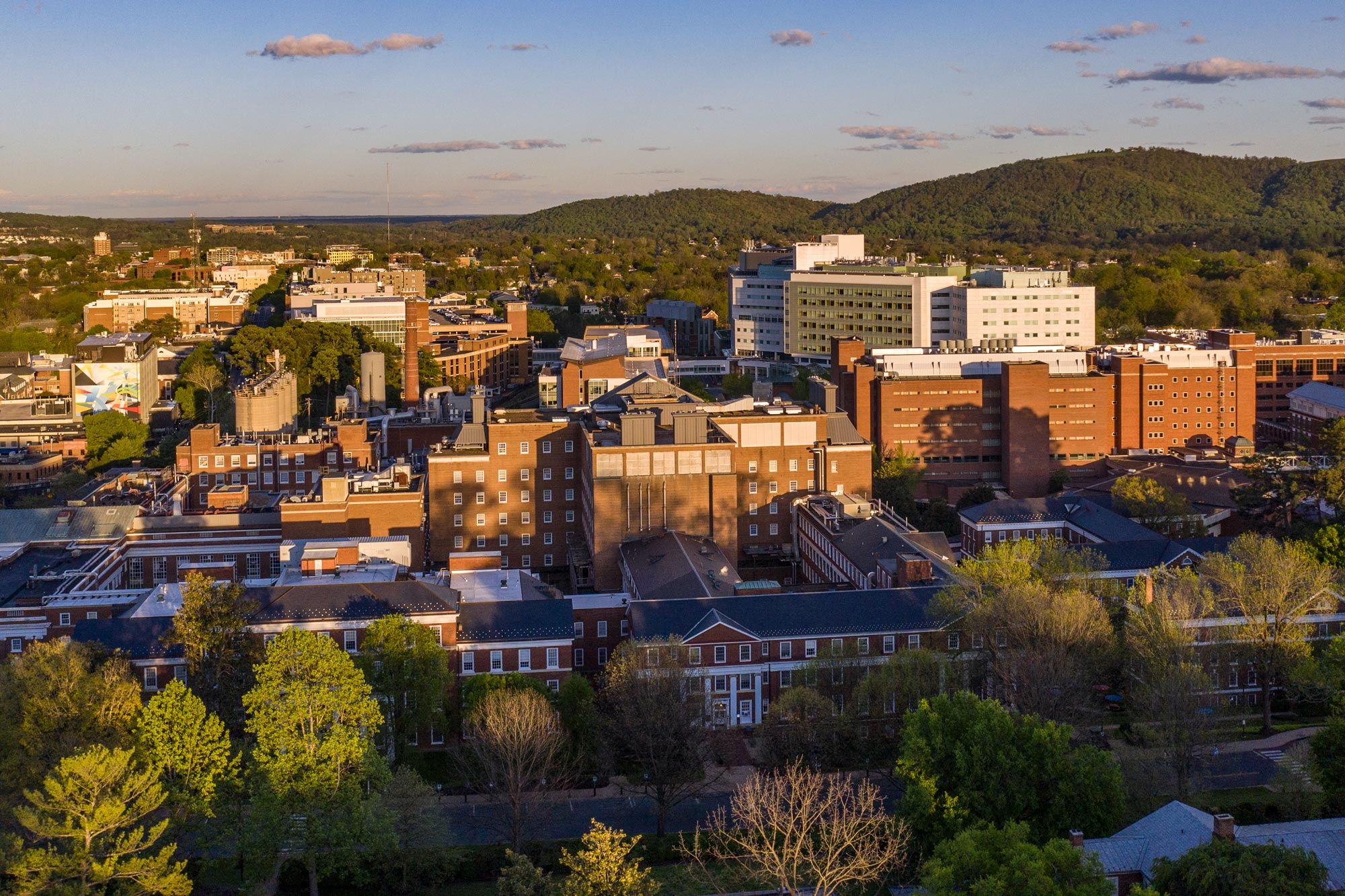Find the latest information on the University’s response to the coronavirus here.
In mid-March, representatives from the City of Charlottesville, Albemarle County and the University of Virginia began working together behind the scenes on what has already proven to be a historic coordinated response to the coronavirus pandemic.
As all involved quickly realized that addressing such an unprecedented situation would require an equally unprecedented level of regional collaboration.
“What’s unique about this environment is that most of the time in our history, it has been one of those three entities that has carried the lion’s share of the risk and burden in a particular incident,” Charlottesville Fire Chief Andrew Baxter said. “The nature of a pandemic is that everybody is fully engaged, which means that the regional coordination and cooperation is absolutely essential. There’s no choice.”
Following state and local emergency declarations resulting from the pandemic, the Charlottesville area’s regional emergency operation plan became effective, bringing together representatives from the city, county and University, along with representatives from the Thomas Jefferson Health District.
The collaborative work takes place under the umbrella of the Emergency Operations Center, which is located on Grounds, though much of its work is being done virtually. The EOC, as it’s known, provides support to front line workers and essential service providers responding to the pandemic, including health care workers, police, paramedics and fire personnel. It also serves the needs of the region’s vulnerable population by assisting with everything from housing assistance and medical care to social services and child care.
“One of the things that tends to happen in an environment like this is that each entity – each locality and institution – focuses internally. And that’s just natural; it’s just like a family,” Baxter said. “So having a regional structure in place, where we’re regularly communicating about these specific issues, has been so important.”
A new development borne of necessity in responding to COVID-19 has been the establishment of a medical policy group that meets regularly so that physicians from UVA Health can provide updates and guidance to EMS providers and coordinate with them and other regional health officials.
Regular topics of discussion include hospital bed capacity, emergency room wait times, the number of ventilators available, testing capacity and the logistics of where patients should be transported and where quarantined employees should be housed.
“I think there was a common realization that we should be prepared and proactively address these questions, rather than reactively deal with them once we hit our surge,” said Dr. Arturo Saavedra, chief for ambulatory strategy at UVA Health and chair of the Department of Dermatology. “We’ve had a better realization of what our constraints are as separate units, so we’ve been able to really think hard about how to help one another.”
Larry “Sonny” Saxton Jr., executive director of the Charlottesville-UVA-Albemarle County Emergency Communications Center, said the medical policy group has been invaluable in responding to the crisis.
He pointed to guidance from UVA physicians on how EMS providers should interact with COVID-19 patients, what information 911 center employees should provide to callers and what precautions front line responders should take when they go home to their families as examples.
“To be able to get their insight and their guidance every couple of days has really been a huge benefit,” Saxton said. “What I’ve heard our partners say is that for the first time in a long time, they’ve established a kind of two-way information flow and a very collaborative process. They’re meeting every two days for at least an hour, or sometimes longer, just dealing with the questions, ideas and opportunities that are coming up from the community and really putting some concerted effort on solving the problems.”
Particularly helpful, Baxter said, has been the group’s development of a protocol for the transfer of COVID-19 patients between EMS crews and emergency department staff at the ambulance entrance instead of inside the hospital.
As he noted, that has reduced potential exposure to EMS providers, minimized the amount of personal protective equipment that’s necessary to use and reduced the amount of time ambulances are out of service for sanitizing.
Baxter added that the group was also quick to establish a UVA COVID-19 Clinic protocol designed to get symptomatic first responders tested quickly, to quarantine and treat not only them, but any other members of their crew who may have been exposed.
“That’s hugely important to us and very meaningful,” he said.
Tim Longo, UVA’s associate vice president for safety and security and chief of police, said the close collaboration during such a difficult time bodes well for regional cooperation going forward.
“A community is best served when its policymakers and those who will be tasked with carrying out those policies come together, roll up their sleeves, and get down to the business of problem-solving in the midst of whatever challenge or crisis that may come their way,” Longo said. “There are no egos in the EOC when we come to work. There is only the willingness to contribute in ways that are thoughtful and well-informed by experience, wisdom and humility.”
Media Contact
Article Information
April 16, 2020
/content/everybody-fully-engaged-pandemic-prompts-regional-cooperation

